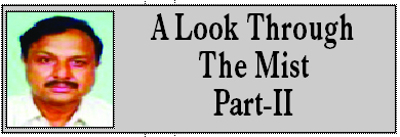Ambedkar focussed on powers resting in elected ‘Legislature’ but also with a check on elected leaders

DAYA SAGAR
To be specific, The ‘uncoded’ British Constitution where the head of the State, the King Emperor is only a nominal head of State with roots in the Monarchy of earlier times (may call Parliamentary Monarchy) and the head of Government is the Prime Minister, the British Parliament though comprises of the House of Lords and the House of Commons but the full unlimited constitutional authority rested in the House of Commons ( an elected body) which could pass and enact any act/law/ amendment / addition in constitution.
The Constitution of United States of America has President as the Head of State as well as head of the Government where as the Parliament there comprises of two houses i. e Senate and the House of Representatives. The house of representatives has to initiate all revenue bills and the senate must also confirm many major appointments made by the President.
On face of it, it is very difficult to amend the constitution of US where as there is no constitutional restriction on the House of Commons of UK to enact any law and once passed by the House of Commons ‘that’ is a law. In case an Act of the President of USA is not made through by the House of Representatives the President still stays as President and in case the President office is vacated before term/ is vacant the Vice President becomes the President till next President is elected.
Constitution of India emerged out of a well reasoned draft sketch which had taken the leads more particularly from the British Constitution and the Constitution of United States & the Government of India Act 1935 and the ‘drip in wisdom’ of drafting committee headed by Dr. Bhim Rao Ambedkar for giving to people of India a democratic republic.
The Constitution of India as adopted in 1949 although focussed on all the powers resting in the representatives elected by the common citizen of India but at the same time it also kept an inherent check on the elected representatives /their elected leader to prevent them from unfairly curving the authority of common man as a unit of republic at any later date with President of India there as protector & defender of Constitution..
In the Indian Constitution the President of India is head of the State ( Union) & ‘part’ of Parliament along with the two houses of elected members (Sabha & Rajay Sabha) and Supreme Commander of the defence forces. President of India though was incorporated as an ‘elected office’ but he/she is elected peoples representative through indirect method of election i.e voted by the members of Lok Sabha ( elected by citizens of India directly), voted by the members Rajay Sabha ( elected indirectly by citizens of India through their members in legislative Assemblies of States (elected by citizens directly) and the members of Legislative Assemblies of the States ( elected by the citizens by direct election) The executive head of the Government is designated as Prime Minister who has to be leader of the party / group that enjoyed the confidence of simple majority of total members in Lok Sabha and is appointed by the President.
A very typical and unique feature of the constitution of India that was drafted & adopted by the Constituent Assembly of India on 26 November 1949 has been that though The President of India for general legislative purposes / governance appeared like a nominal head of ‘State’ but he/she was in a way given the responsibility under oath to Protect & Defend the Constitution of India on oath { Art-60 of COI }. Not only that although like US the Vice President of India can hold the office of the President during his/ her absence but the vacancy , if there, has to be ultimately filled by a fresh election with in prescribed time ( 6 months). No doubt in Art-74of the 1st edition of COI it was provided that there will be council of ministers with Prime Minster as head to aid and advice the President but the president was not bound to accept the advice of the Council of Ministers. ( Art-74 of the COI < (1) There shall be a Council of Ministers with the Prime Minister at the head to aid and advise the President in the exercise of his functions. (2) The question whether any, and if so what advice was tendered by Ministers to the President shall not be inquired into in any court> so the authority of the President to protect & defend the Constitution even by over ruling the elected government / parliament was ultimate to some extent. So keeping in view principles enshrined in the constitution of India , the Constitution of India as adopted in 1949 could be rated as a very considerate and well meaning document that could be made by anyone with the resources in hand as could be there in 1949 to possibly give the people of India , that is Bharat, a meaningfully safe &rightful environment of in ‘Independent Democratic Republic wherein although the power ( in a way constituent power) to amend the constitution ‘was’ enshrined in Art-368 but that was/ is not / cannot be taken as ultimate by the Parliament which is slated for constitution every five years under the provisions of Constitution (1949).But the 42nd and 44rth amendments made during ‘1975’ days have not been fair to the office of president of India as protector and defender of Constitution.
(the author is a Sr Journalist & analyst of J&K Affairs. [email protected]).
